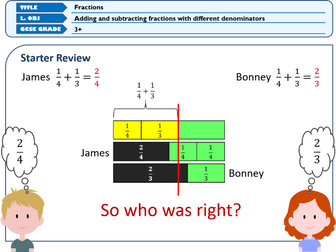Understanding the interquartile range
<p><strong>Understanding the interquartile range.</strong></p>
<p>Complete lesson aimed primarily at students working at intermediate/higher level in KS4 but could also be used in late KS3 with higher groups.</p>
<p>The resource helps students understand how the interquartile range differs from the range and why looking at the IQR as a measure of spread can prove to be more useful than the range in certain circumstances.</p>
<p>Although this lesson leads perfectly into box plots, the aim here is to establish a secure understanding of what the IQR is and how it is found from a set of numeric data.</p>
<p>Teaching this topic over a number of years I have found that despite students showing confidence in calculating the IQR, they often struggle making valid comments as to what this measure of spread is telling them about the data. This lesson also aims to address this common issue.</p>
<p><strong>The resource includes:</strong></p>
<p>-Key vocabulary<br />
-Fully animated visual representation of what the IQR is<br />
-Warm-up activity getting students to find the median and range<br />
-Fully animated walkthrough showing students how to find the LQ, UQ & IQR<br />
-Class discussion points to develop thinking on range versus IQR<br />
-‘Always True’ activity to deepen understanding on commenting on IQR<br />
-Independent ‘You Do’ practise questions on finding and commenting on IQR<br />
-Answers to the practise questions<br />
-Fully animated walkthrough showing students how to compare using IQR<br />
-Independent ‘You Do’ practise questions on comparing using the IQR<br />
-Answers to the practise questions<br />
-GCSE exam question</p>
<p>If you purchase and like the resource, please rate it and let me know as this is one of a series of lessons on data which I will be happy to upload if this one proves successful.</p>
<p>Thank you. I hope you enjoy!</p>
<p>PazzaMaths</p>
